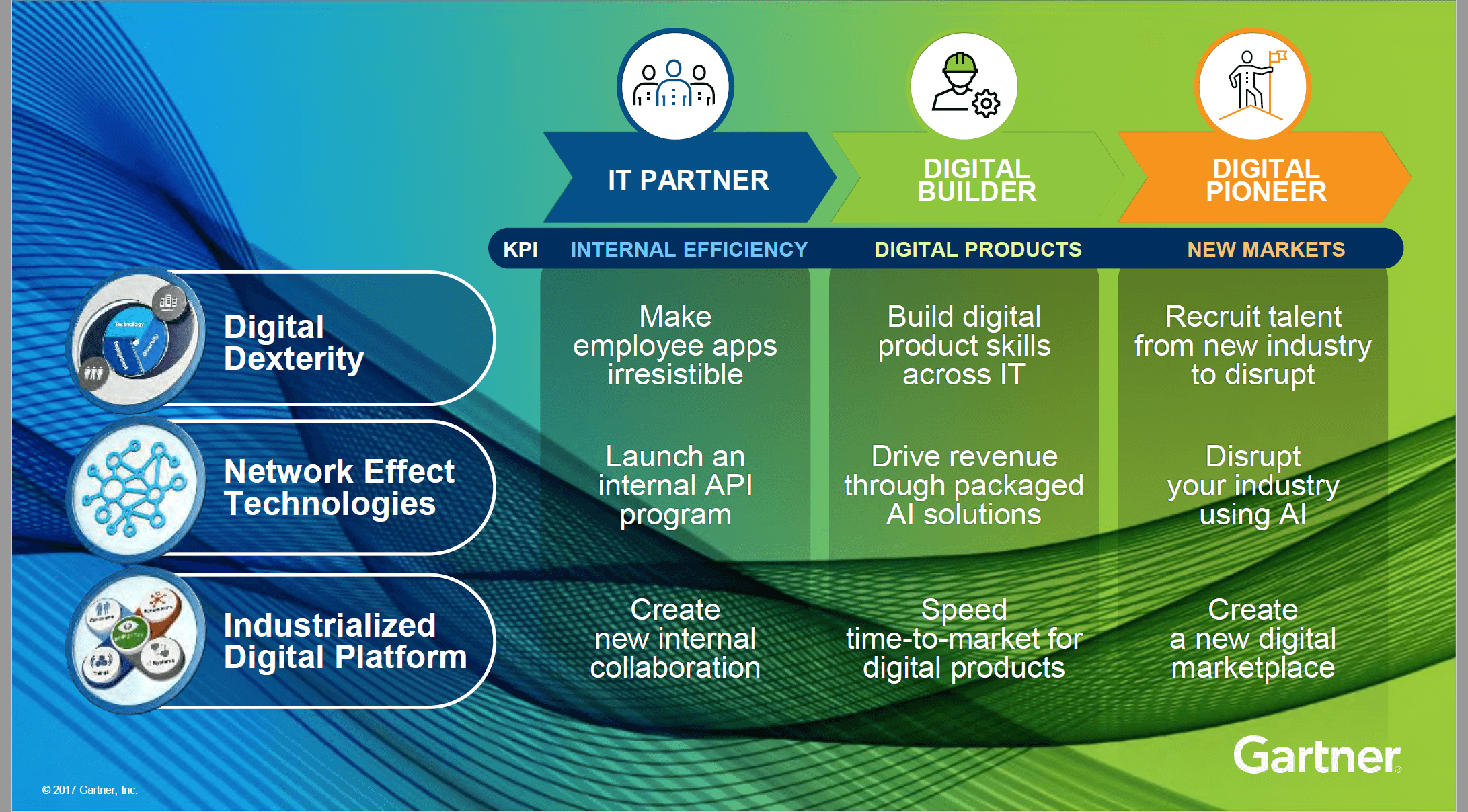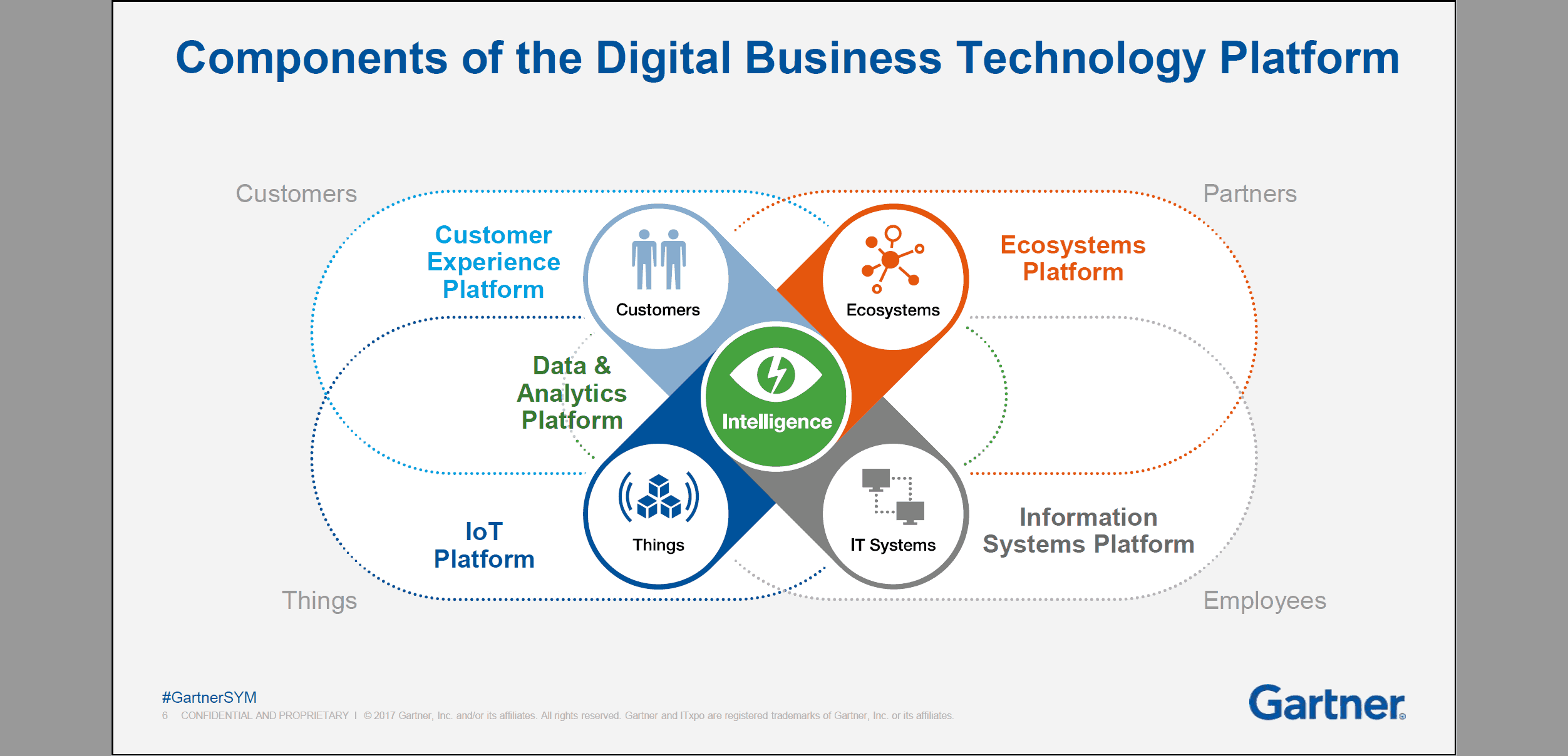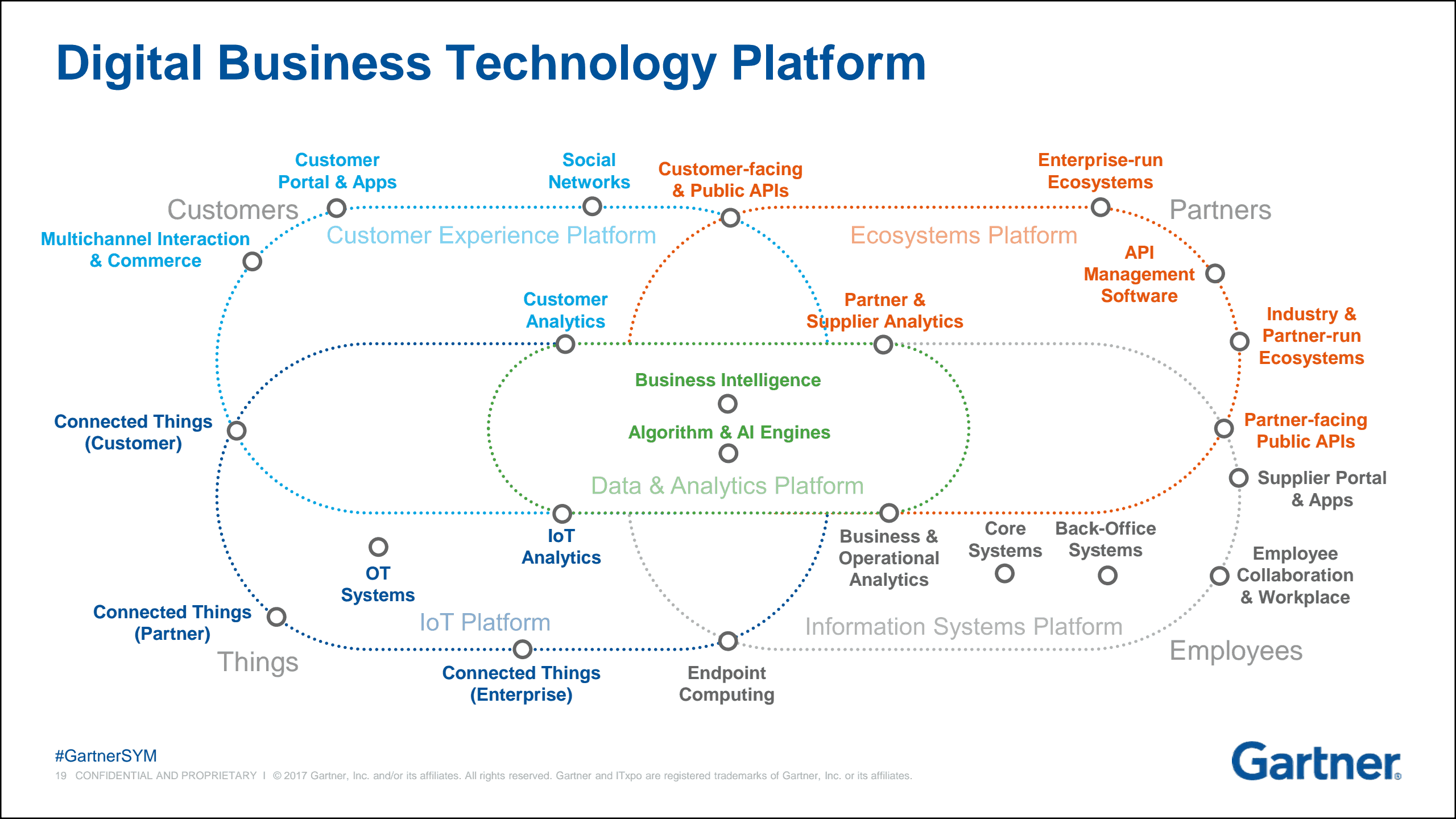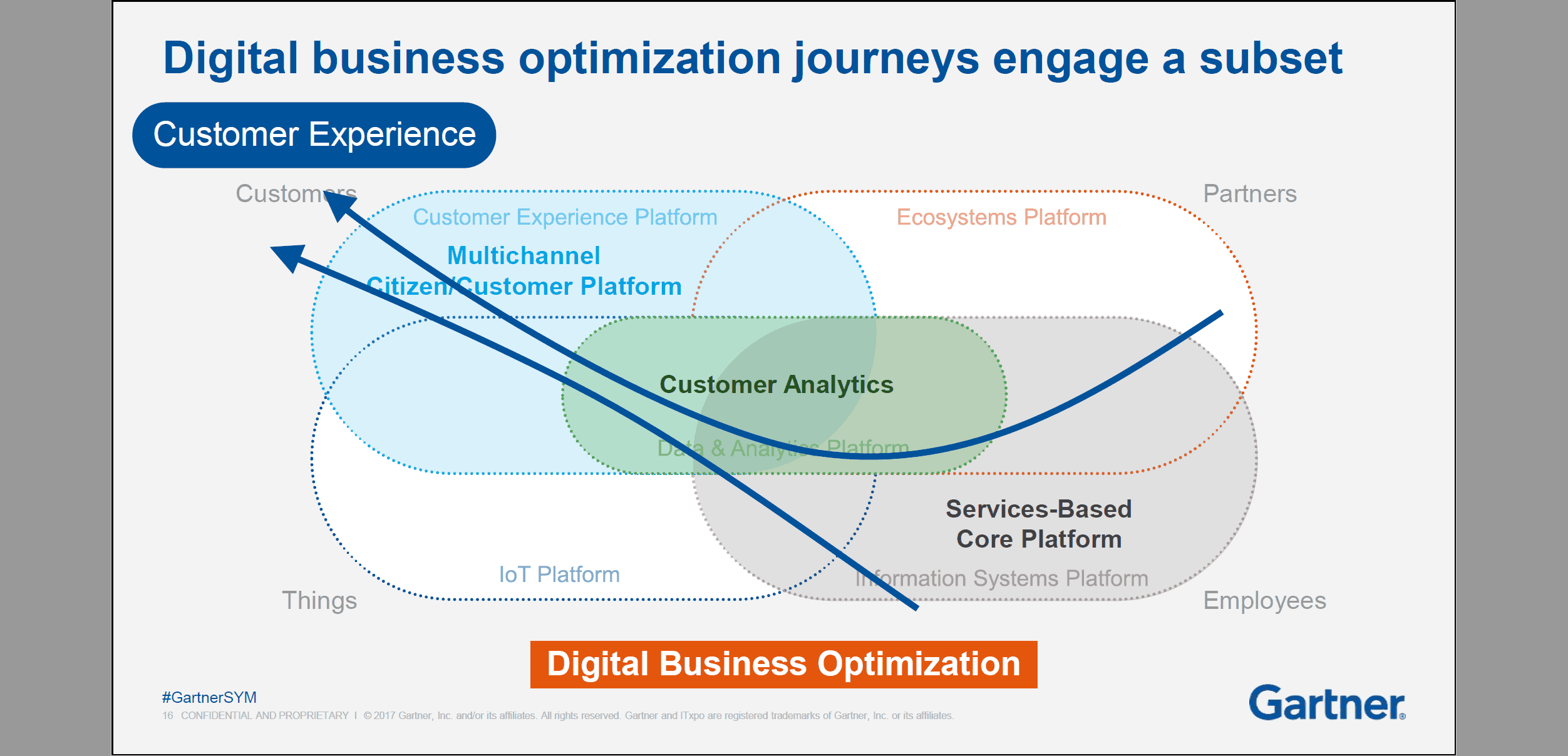Takeaways from Gartner Symposium: 5 Focus Areas for Your Digital Business Strategy
Gartner has been talking about the Digital Business Platform for quite some time, and last week most Gartner speakers were focused on how companies can start or improve on their Digital Platform. The central theme of the Symposium was how to industrialize the Digital Business Platform.
According to Gartner, it is important to start early with digital and focus on establishing a strategy to get digital value at scale. Getting to this value requires you to adopt or develop a Digital Business Platform. During the keynote, Gartner mentioned that the shakeout of companies begins when 20 percent of market value goes through some disruptive technology. It’s important to make sure to keep up with this [Digital] disruption and become a leader in the market versus a casualty.
The Secret to Digital is Analog
Gartner refers to three strategies to become a leader in digital:
1. Make employee apps irresistible
When adopting or developing a Digital Platform, many leaders focus primarily on creating a single platform for the customer. But Gartner stresses that in order to get the maximum value of the Digital experience, it is important to also focus on enabling your internal organization. Enabling your employees with a quick and easy to use platform will increase the efficiency of all your business processes and will truly allow you to get the most value from adopting the Digital Business.
2. Build product skills across IT
Allowing this continuous improvement of your business will also increase the need for technology skills. To accommodate this, your business users need to be able to improve collaboration with the traditional IT teams and aim to become a single team working towards a shared business goal. With the right ecosystem in place, you can train and transition IT skills to the business units and let them become more proficient in what they do, and simultaneously remove any bottlenecks from your IT organization. One recommended way to do this is by adopting a bimodal approach or DevOps strategy.
3. Recruit talent to disrupt
When trying to disrupt the market, or if you are trying to catch up, recruiting new talent becomes a necessity. Disruptive technologies often require a different skill set and a new way of thinking. Attract new talent and allow them to focus on digital business and creating an amazing user experience. This new talent is key in disrupting the market and innovating your business.
Gartner refers to these three strategies as ‘Digital Dexterity’.
Gartner Predicts: “In 2021, AI augmentation will create 2.9 trillion dollars of business value and 6.2 billion hours of worker productivity”
With relatively new technologies such as IoT and AI, companies can now supplement their workforce and enhance their productivity. There was a lot of focus on AI during the week and a lot of new companies were there to present their AI capabilities.

Setting up AI and effectively leveraging this within your organization will take quite some time, you’ll need to build a new team around these initiatives to become proficient in this new way of thinking. As part of what Gartner calls “Network Effect Technology”, AI technology is critical to be ahead of the curve. Investing in AI will take a relatively long time before you’ll find the value of it. In order to prepare your organization for these changes through APIs and IoT, companies can get quick business value and prepare their organization for the next steps.
Gartner’s Five Areas of Focus for a Digital Business Model

The Digital Platform is something Gartner has been speaking about for a few years but they have refined their message and provided a clearer strategy on how to adopt a Digital Platform for your industry. About a year ago, Gartner refined their Digital Business Model to include five areas:
- IT Systems
- Customers
- Ecosystems
- Things
- Intelligence
During the Symposium Gartner spoke in more detail on the Digital Business Technology Platform model. With this model, you can plot your business systems and initiatives in the five areas. allowing you to plot your strategy and focus on the systems and gaps in your technology.

Every company should focus on these five areas in their Digital Platform. For each organization, the focus area may start in different places based on the gaps each business faces in their strategy. With this strategy in mind, it becomes possible to plot the route towards this goal on the Digital Technology Platform model and identify the gaps.
If we look at your current business and IT architecture, these are usually separate. With the new model, it becomes possible to combine the two in a single model.

Use a Hybrid Integration Platform
Building a Digital Platform is done through integrating your new and existing systems, and the quickest way forward is to leverage something that Gartner calls a ‘Hybrid Integration Platform’. The Hybrid Integration Platform allows your organization to expose and manage the data through different systems. There are many different tools out there that offer different benefits and Mendix is one of them.
Key Takeaways
Throughout the week, Gartner consistently focused the messages in the keynotes around how to adopt or improve the five areas of the Digital Business Platform. You can do this by focusing and extending your current teams, and leverage AI & IoT solutions to enhance the capacity and quality of your employees. Achieving the maximum digital value requires a solid strategy and a technology platform with the flexibility to allow business and IT to collaborate. With a Hybrid Integration Platform like Mendix, your business users can learn IT skills, integrate IoT solutions and develop intelligent applications.
Experimenting and innovating with these technologies will require a bimodal approach; Setup and scale your Mode 2 team to support the new initiatives and be ahead of the disruption that is still to come. With a tool like Mendix, you can enable your teams to quickly adopt this approach and become successful at implementing and scaling bimodal in your organization.